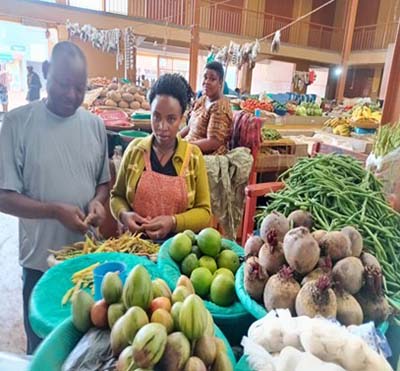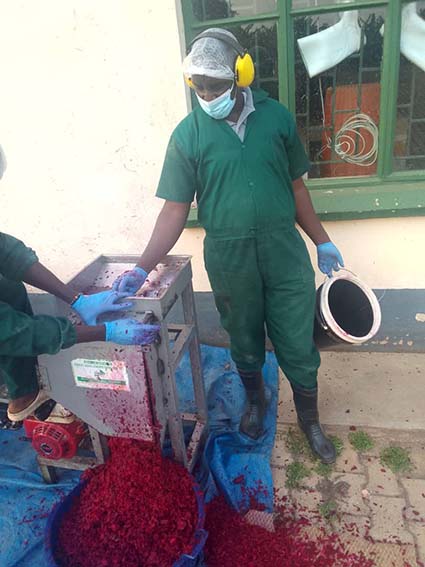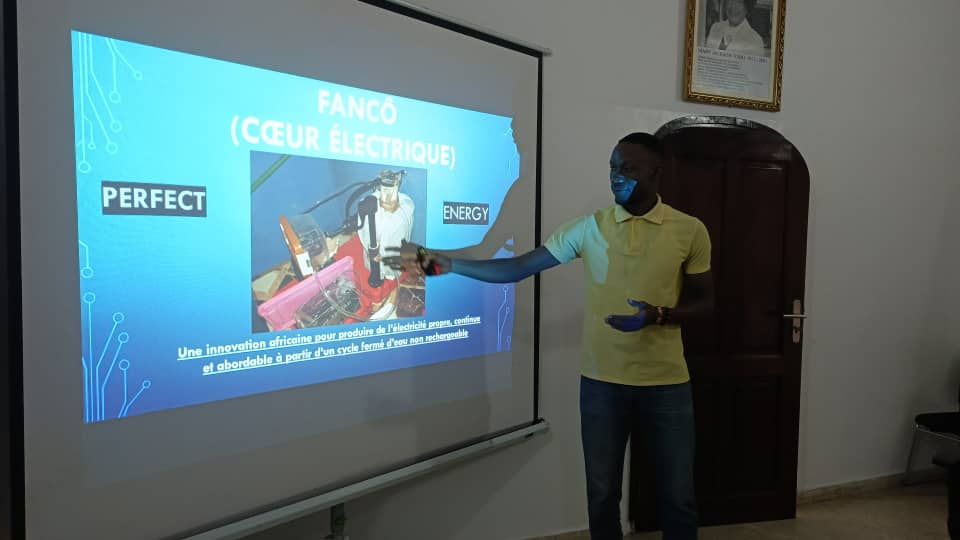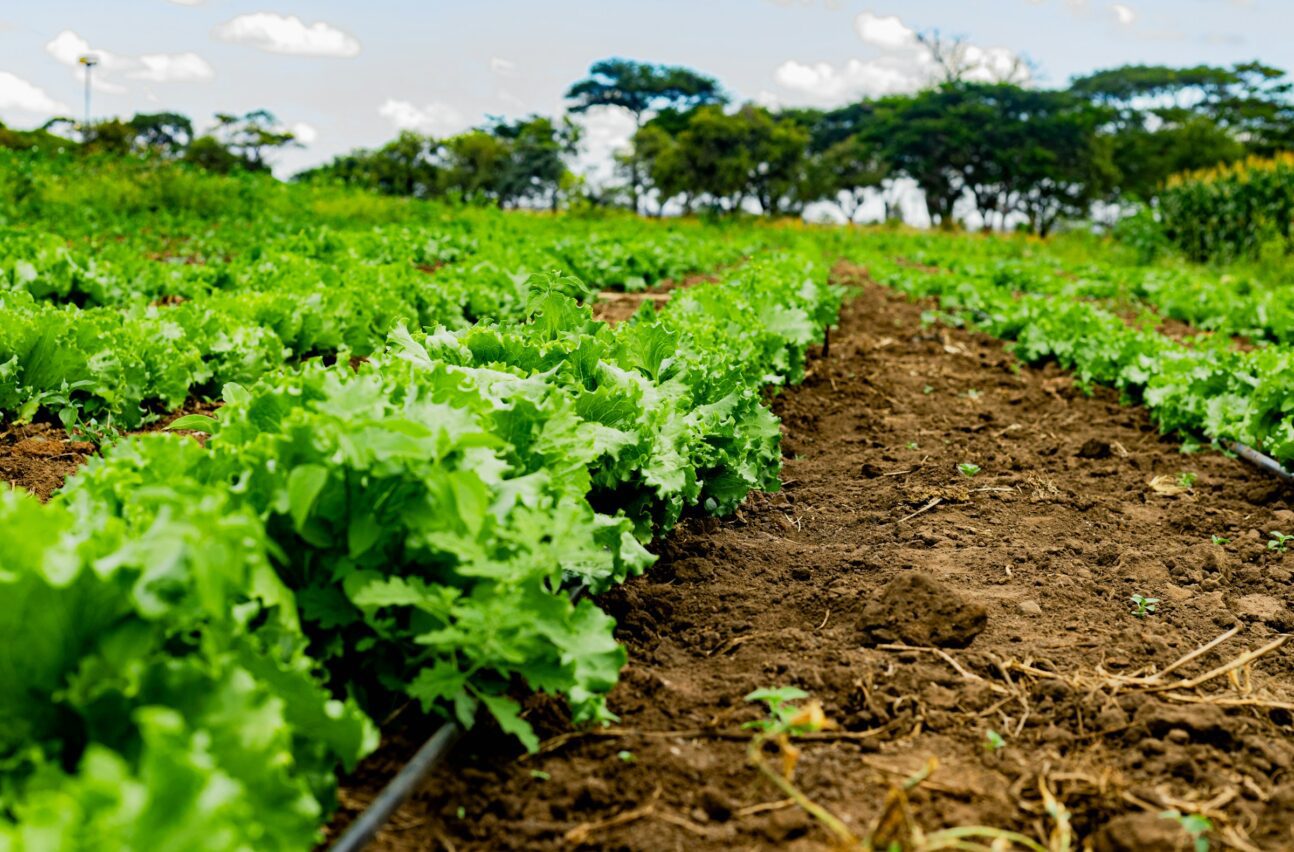SGCI News
In many villages across Uganda, the fatigue of anaemia is a silent companion for countless women and children. Mothers rise before dawn to cook and fetch water, while battling dizziness…
In many villages across Uganda, the fatigue of anaemia is a silent companion for countless women and children.
Mothers rise before dawn to cook and fetch water, while battling dizziness and weakness. Children, too, struggle to keep up at school, their minds fogged by chronic tiredness and poor concentration.
For Francis Omujal, these everyday struggles were impossible to ignore.
“Nearly half of Uganda’s children under five and more than a third of pregnant women suffer from anaemia,” he says. “Behind those numbers are faces of mothers who can’t work because they’re weak, and children whose learning and growth are stunted.”
Uganda has pledged to reduce anaemia rates as part of global nutrition targets, but progress has stalled, he says.
The usual prescriptions of iron tablets and fortified foods often fall short, especially in rural communities where access, cost, and unpleasant side effects discourage continued use.
So Omujal, the senior research officer at the Natural Chemotherapeutics Research Institute in Uganda, decided to look more closely into Uganda’s traditional foods for a solution.
What he found growing in local gardens turned out to be a scientific breakthrough.

Supported by the Science Granting Councils Initiative (SGCI) through the Uganda National Council for Science and Technology (UNCST), his research focused on developing a beetroot-based, iron-fortified nutraceutical to combat anaemia using locally available foods.
Nutraceutical is part of food that give extra health benefits beyond their basic nutritional value, such as herbal products and dietary supplements.
Regular consumption of iron-fortified beetroot, his team found, can accelerate recovery from anaemia among mothers and children under five, reducing mortality and improving wellbeing.
The betalain compounds naturally present in beetroot enhance iron absorption by up to 50 per cent, supporting higher haemoglobin levels, reduced fatigue, and greater vitality. Local beetroot production can also create employment through farming and processing, empowering rural communities.
Local food, local science
“People in Uganda already use beetroot as a home remedy for anaemia,” Omujal explains. “But nobody really understood how it worked.”
Curious, he explored beetroot’s nutritional chemistry and discovered that its natural pigments – betalains – do more than give it a deep red colour; they help the body absorb iron more efficiently.

Beetroot contains organic acids and antioxidants that make dietary iron more bioavailable, he says. “We saw potential to turn this traditional food into a scientifically validated nutraceutical.”
His team fortified beetroot with iron using a cold-processing method, a technique that preserves betalain compounds and vitamin C, both vital for iron absorption.
“If you heat beetroot too much, you destroy these compounds,” he explains. “Our cold-processing method keeps them active, making the product more effective.”
When tested in the lab, the results were striking.
Within ten days, key blood markers such as haemoglobin and red blood cell counts showed significant improvement.
The results also demonstrated safety, with no changes in liver enzymes, kidney biomarkers, or lipid profiles.

“It was exciting to see such rapid recovery,” Omujal says. “And the formulation proved safe for both children and pregnant women.”
Beetroot is an excellent candidate for a fortified anti-anaemic supplement because it is natural, locally available throughout the year, and easy to process and store, Omujal says.
The powder dissolves readily in cold water, requires no cooking, and offers a pleasant taste and appealing colour, making it convenient for daily use.
Beyond pills
Unlike imported supplements, Omujal’s beetroot-based product draws on Uganda’s own agricultural resources. The powder is designed to be mixed easily with juice or water, offering an affordable, familiar, and natural way to manage anaemia.
“Beetroot grows locally throughout the year,” he says. “We buy from smallholder farmers, process it nearby, and keep the value chain within the community.”
That local link has ripple effects. Creating new income streams for rural growers and processors, especially women.
“If we can scale production, we’re not just improving health, we’re also strengthening livelihoods,” Omujal notes.
Why current approaches fall short
Uganda’s anaemia prevention programmes rely largely on iron tablets and fortified foods. But many women stop taking the tablets because of nausea, constipation, or a metallic taste.
In remote areas, supply chains are unreliable, and fortified foods often fail to reach the poorest families.
“Even when people eat foods containing iron, most of it is the non-heme type from plants,” Omujal explains.
Non-heme iron is dietary iron found in plant-based foods like beans, lentils, spinach, nuts, seeds, and fortified grains. This form of iron is less easily absorbed by the body.
“It’s harder for the body to absorb, especially when the diet also includes tea, coffee, or milk, which inhibit iron uptake.”
Many Ugandan diets rely heavily on starchy staples such as matooke, cassava, and maize, which are low in bioavailable iron and other essential micronutrients.
Then, the prolonged cooking of vegetables destroys vitamin C, a key enhancer of iron absorption.
Cultural taboos restrict pregnant women from eating eggs or liver, and in some homes, men and older family members are served first, leaving women and children with less nutritious portions.
“Food culture, poverty, and lack of nutrition education all come together to create a perfect storm,” he says.
Programmes that focus narrowly on iron also overlook the roles of folic acid, vitamin B12, and vitamin C in red blood cell formation, and the frequent stockouts and high supplement costs further restrict access.
From research to real-world impact

With the funding from SGCI and UNCST, Omujal and his team took their innovation from concept to pilot stage, formulating the fortified beetroot product, conducting experiments, and establishing small-scale production, packaging, and distribution.
“The support allowed us to buy raw beetroot from local farmers, purchase fortification ingredients, and establish small-scale production,” he says.
“Now, people can access the product in powdered form through pharmacies and supermarkets.”
Plans are underway for clinical trials to determine optimal dosage, safety, and long-term effects.
Future versions may include child-friendly snacks or fortified beverages tailored for women of reproductive age.
A vision for healthier generations
For Omujal, the vision extends far beyond the lab.
The project aligns with Uganda’s commitment to the World Health Assembly Global Nutrition Targets and illustrates how locally led research can inform policy and strengthen community health systems.
It embodies the SGCI vision of empowering African scientists to design solutions rooted in local realities and driven by scientific excellence.
“This innovation isn’t just about treating anaemia,” he says. “It’s about giving mothers strength, helping children grow smarter and stronger, and using our own foods to solve our own problems.”
Please check out the stories and let us know what you think. We would love to hear from you!
Let’s continue the conversation on our social media
Published on 6 November 2025
Written by Jackie Opara-Fatoye
Related News
Powering Africa’s science through stronger councils
Strengthening national science granting councils is emerging as one of the most effective pathways for improving how African countries finance and govern science for development. This was the focus of the thematic session on Financing Science for Impact held during the Science Forum South Africa…
Councils seek solutions to research financing crisis
African countries are working to strengthen research quality, ethical practice, and grant management through the Research Excellence and Good Financial Grant Practices Workshop. The Science Granting Councils Initiative (SGCI), together with the Association of African Universities and Senegal’s Ministry of Higher Education, Research and Innovation,…
Innovation awards boost Côte d’Ivoire’s national research drive
The Fund for Science, Technology and Innovation (FONSTI) opened the audition phase for the FONSTI Innovation Prize 2025, marking a decisive moment in a process launched earlier this year to strengthen Côte d’Ivoire’s innovation ecosystem. The auditions follow the official launch of the inaugural Innovation…
SGCI funded projects
Rwanda’s integrated approach to sustainable agriculture and nutrition
Project Titles & Institution Areas of Research Number of Projects being funded Project Duration Grant Amount In-Kind Distribution Council Collaboration with other councils





